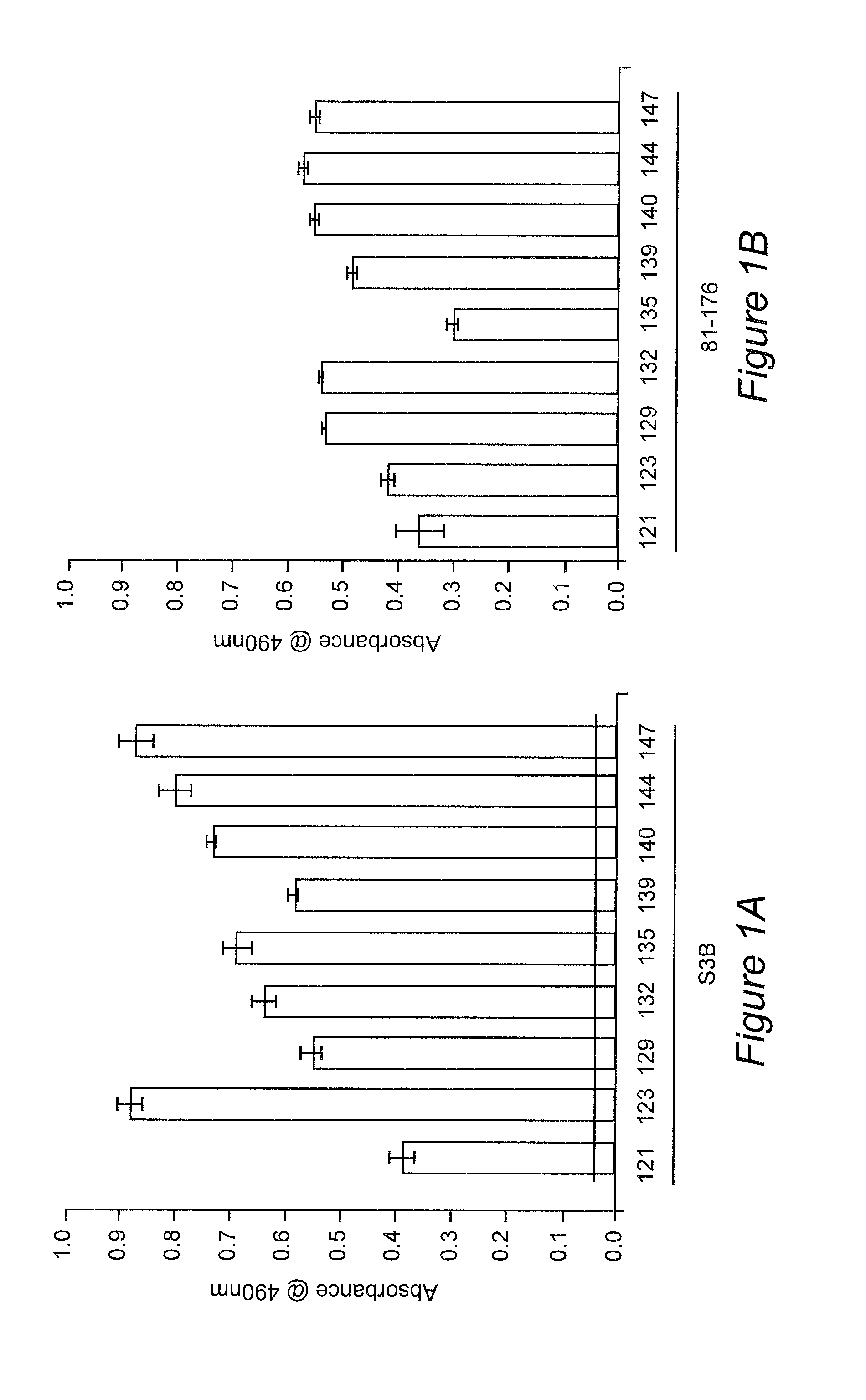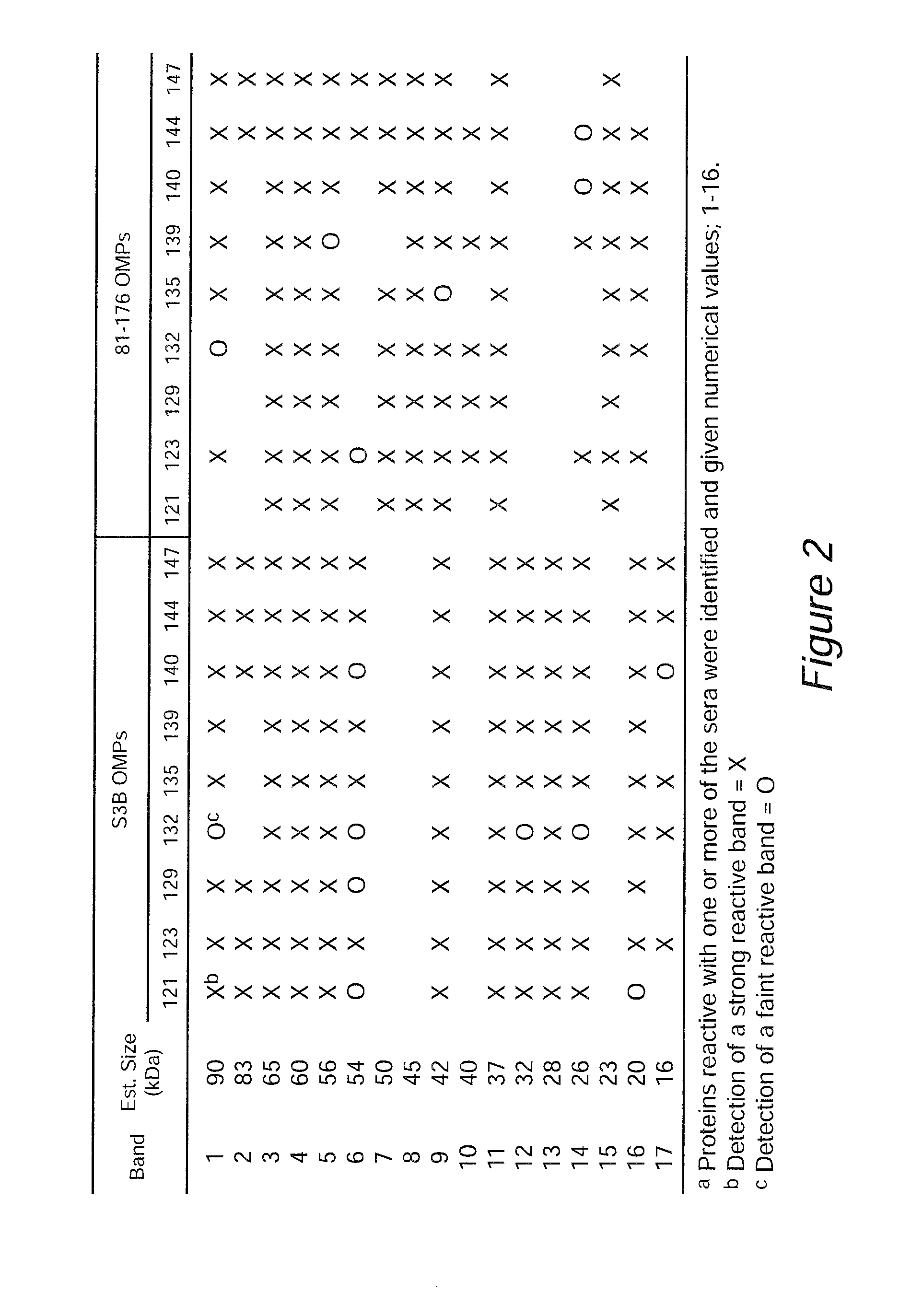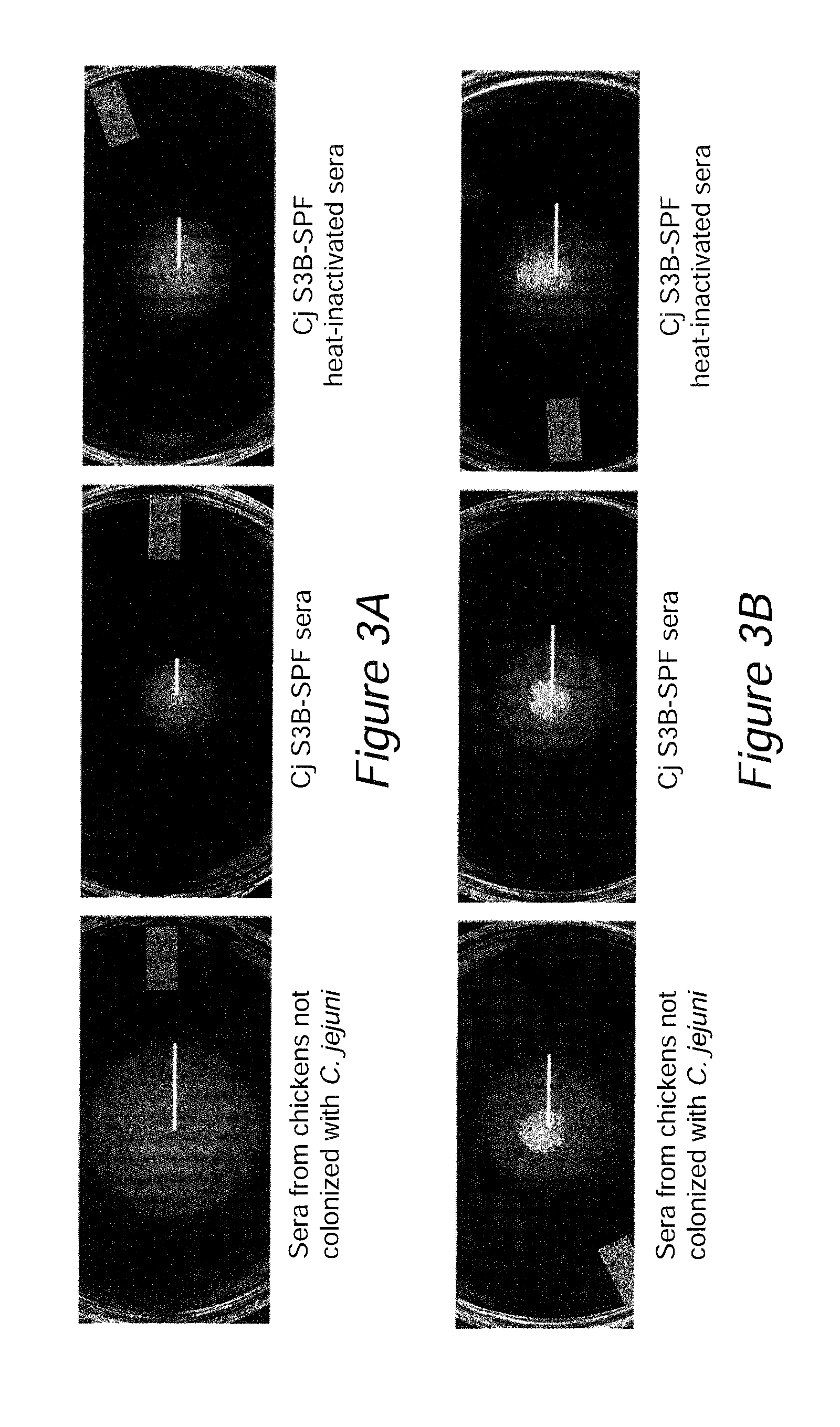Antigen compositions and methods of inhibiting campylobacter jejuni bacterial infection and uses of the antigen compositions
a technology of antigen compositions and compositions, which is applied in the direction of drug compositions, peptides, medical preparations, etc., can solve the problems of contamination of meat in slaughterhouses and other problems, and achieve the effect of preventing (or substantially decreasing) the ability of
- Summary
- Abstract
- Description
- Claims
- Application Information
AI Technical Summary
Benefits of technology
Problems solved by technology
Method used
Image
Examples
example 1
Identification of Campylobacter jejuni Proteins Recognized by Chicken Maternal Antibodies
[0102]In a previous study, chicks with maternal antibodies generated against the S3B strain of C. jejuni provided protection against Campylobacter colonization (Sahin et al., 2003. AEM.69:5372). Serum samples, collectively referred to as the Cj S3B-SPF sera, were obtained from the previous study. These sera were determined to contain maternal antibodies that reacted against C. jejuni whole cell lysates as judged by ELISA. The antigens recognized by the Cj S313-SPF antibodies were identified by immunoblot analysis, coupled with mass spectrometry, of C. jejuni outer membrane protein extracts. This approach led to the identification of C. jejuni proteins recognized by the maternal antibodies, including the flagellin proteins and CadF adhesin. In vitro assays revealed that the Cj S3B-SPF sera retarded the motility of the C. jejuni S3B homologous strain, but did not retard the motility of a heterolog...
example 2
Examination of Campylobacter jejuni Putative Adhesins and Identification of a New Protein, Designated FLpA, Required for Chicken Colonization
[0122]Campylobacter jejuni colonization of chickens is presumably dependent upon multiple surface exposed proteins termed adhesins. Putative C. jejuni adhesins include CadF, CapA, JlpA, MOMP, PEB1, Cj1279c, and Cj1349c. The genetic relatedness of 97 C. jejuni isolates recovered from human, poultry, bovine, porcine, ovine, and canine sources was examined by multilocus sequence typing (MLST) and their profile of putative adhesin-encoding genes was determined ed by dot blot hybridization. To assess the individual contribution of each protein in bacteria-host cell adherence, the C. jejuni genes encoding the putative adhesins were disrupted by insertional mutagenesis. The phenotype of each mutant was judged by performing in vitro cell adherence assays with chicken LMH hepatocellular carcinoma epithelial cells and in vivo colonization assays with bro...
example 3
REFERENCES FOR EXAMPLE 3
[0174]1. Cordwell, S. J., A. C. Len, R. G. Touma, N. E. Scott, L. Falconer, D. Jones, A. Connolly, B. Crossett, and S. P. Djordjevic. 2008. Identification of membrane-associated proteins from Campylobacter jejuni strains using complementary proteomics technologies. Proteomics. 8:122-139.[0175]2. de Melo, M. A., and J. C. Pechere. 1990. Identification of Campylobacter jejuni surface proteins that bind to eucaryotic cells in vitro. Infect. Immun. 58:1749-1756.[0176]3. Flanagan, R. C., J. M. Neal-McKinney, A. S. Dhillon, W. G. Miller, and M. E. Konkel. 2009. Examination of Campylobacter jejuni putative adhesins leads to the identification of a new protein, designated FlpA, required for chicken colonization. Infect. Immun. 77:2399-2407.[0177]4. Konkel, M. E., J. E. Christensen, A. M. Keech, M. R. Monteville, J. D. Klena, and S. G. Garvis. 2005. Identification of a fibronectin-binding domain within the Campylobacter jejuni CadF protein. Mol. Microbial. 57:1022-103...
PUM
| Property | Measurement | Unit |
|---|---|---|
| Composition | aaaaa | aaaaa |
| Antigenicity | aaaaa | aaaaa |
Abstract
Description
Claims
Application Information
 Login to View More
Login to View More - R&D
- Intellectual Property
- Life Sciences
- Materials
- Tech Scout
- Unparalleled Data Quality
- Higher Quality Content
- 60% Fewer Hallucinations
Browse by: Latest US Patents, China's latest patents, Technical Efficacy Thesaurus, Application Domain, Technology Topic, Popular Technical Reports.
© 2025 PatSnap. All rights reserved.Legal|Privacy policy|Modern Slavery Act Transparency Statement|Sitemap|About US| Contact US: help@patsnap.com



